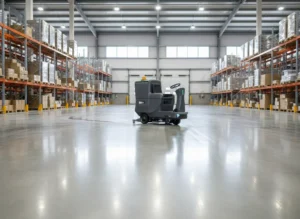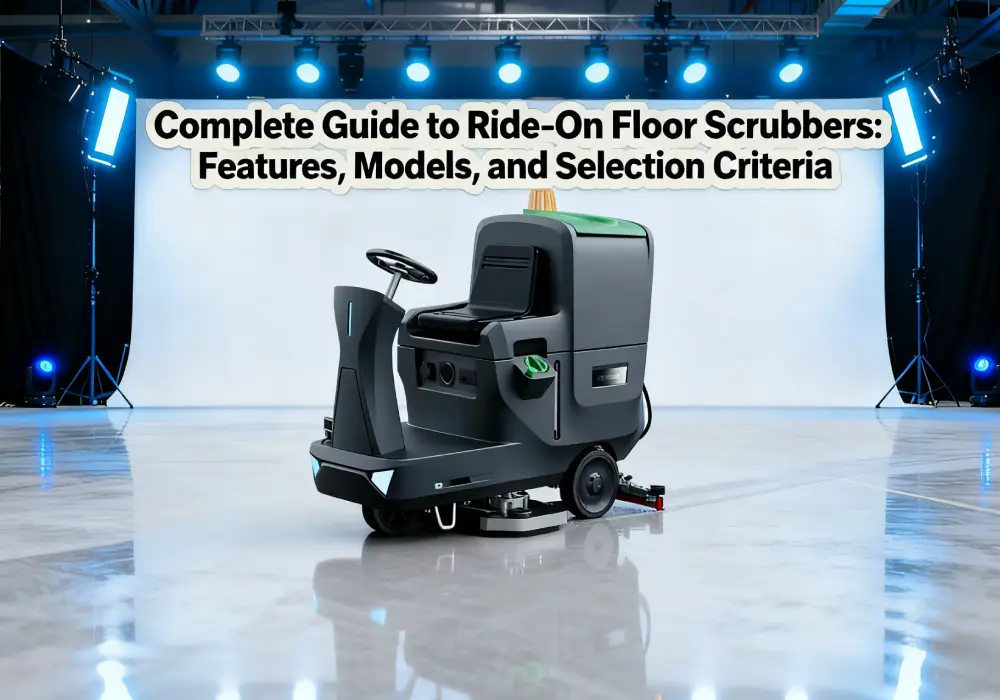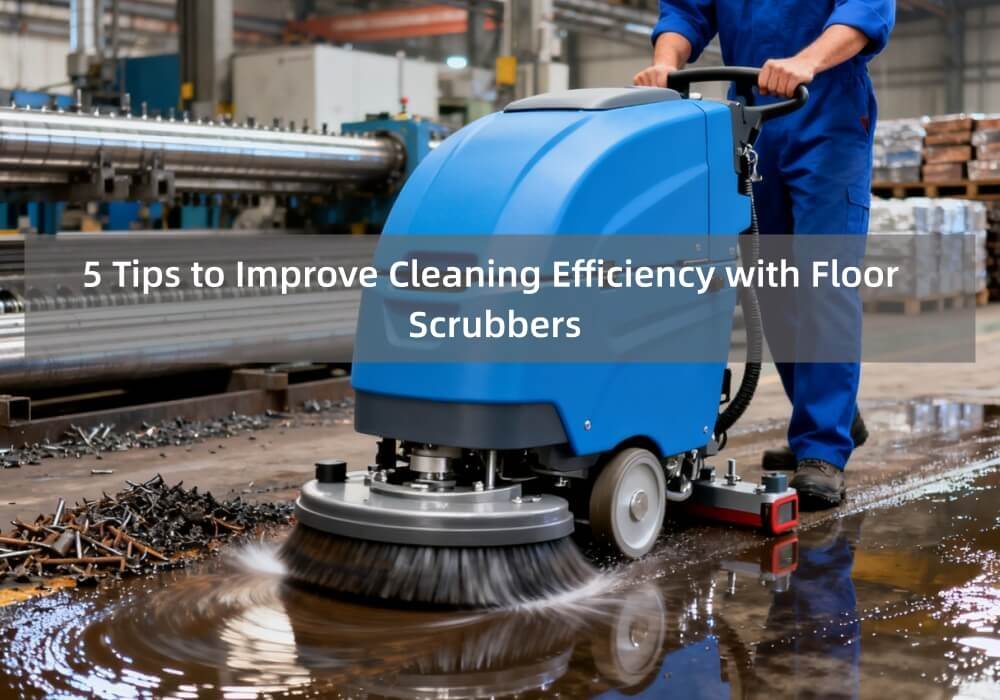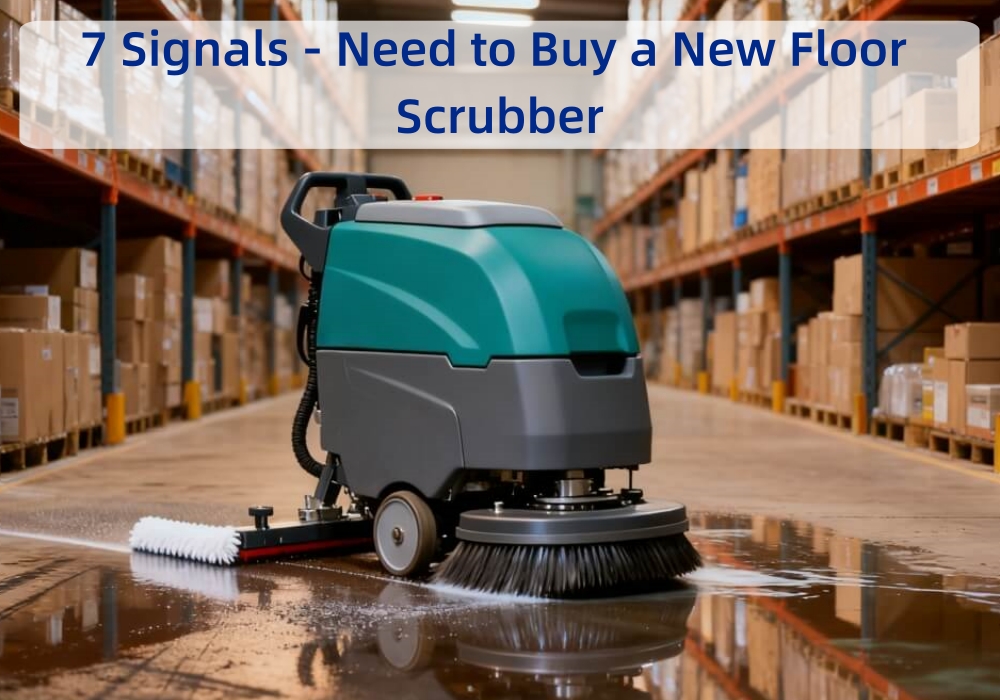Estimated Reading Time: 6 minutes
Industrial floor scrubbers are specialized cleaning machines engineered to deliver superior hard floor hygiene and significant labor cost reduction in commercial and large-scale environments. Investing in the right unit can boost cleaning efficiency by up to 90% compared to traditional methods, drastically minimizing operational expenditure across vast floor spaces. This definitive guide covers the essential types, non-negotiable technical specifications, precise application matching criteria, and long-term ROI assessment for selecting industrial floor scrubbers. Ideal for facility managers, procurement specialists, and cleaning contractors seeking reliable, high-performance equipment.

Understanding Industrial Floor Scrubbers
Industrial floor scrubbers represent a critical investment in cleaning infrastructure, designed specifically for high-traffic, heavy-soil environments. These machines come in two primary configurations: ride-on scrubbers for large facilities and walk-behind units for medium-sized spaces. The key to maximizing return on investment lies in precisely matching machine specifications to your facility's square footage, floor type, and cleaning requirements. When beginning this selection process, understanding the broader context of commercial equipment is helpful: How to Choose a Commercial Floor Scrubber: A 6-Point Checklist These machines utilize high-pressure brush decks and large capacity tanks (often 50+ gallons) to achieve superior cleaning outcomes far exceeding manual methods, enhancing hygiene while maximizing labor efficiency across spaces exceeding 25,000 square feet.
Key Technical Specifications
Understanding core specifications ensures optimal machine selection for your specific needs:
| Specification | Walk-Behind Range | Ride-On Range |
|---|---|---|
| Cleaning Path | 17" – 33" | 26" – 62" |
| Productivity | 35,000 sq ft/hr | 100,000 sq ft/hr |
| Tank Capacity | 7 – 26 Gallons | 29 – 100 Gallons |
| Runtime | 2-3 hours | 4-6 hours |
What is the difference between disc and cylindrical scrub decks?
Disc scrub decks operate at 225-240 RPM and excel on smooth, even surfaces, providing consistent cleaning through rotating pads. Cylindrical decks run at higher speeds (470-630 RPM) and incorporate debris collection, making them ideal for textured floors and environments with loose soils.
Application-Specific Selection Guide
Warehouses and Distribution Centers
For large, open spaces, ride-on scrubbers with 48"-62" cleaning paths and 50+ gallon tanks deliver optimal efficiency. These environments benefit from machines capable of covering 60,000+ square feet per hour with minimal operator fatigue.
Retail and Healthcare Facilities
These environments require walk-behind scrubbers or compact riders (17"-33" paths) for superior maneuverability around fixtures and equipment. Look for quiet operation and quick-dry features to maintain safety in public spaces.
Manufacturing and Industrial Settings
Heavy-duty industrial floor scrubbers with cylindrical decks handle debris-laden floors effectively. Consider units with extended run times and robust construction for continuous operation in demanding conditions.
Ride-On vs. Walk-Behind: Making the Choice
The decision between ride-on and walk-behind models depends on several key factors:
- Facility Size: Walk-behind units suit spaces under 25,000 sq ft; ride-on machines excel above this threshold
- Aisle Width: Ride-on units require wider turning radiuses (consider minimum 48" aisles)
- Budget Impact: Walk-behind models typically cost 40-60% less initially but require more labor hours
- Productivity Needs: Ride-on units clean 3-4 times faster than walk-behind equivalents. The comprehensive comparison between these two fundamental machine types is detailed in our guide on How to Choose a Commercial Floor Scrubber: A 6-Point Checklist
How do I determine the right tank capacity for my facility?
Calculate your cleanable square footage and divide by the machine's hourly productivity rate. Add 20% to this figure to determine minimum tank capacity needed. For example, a 40,000 sq ft facility cleaned by a machine covering 20,000 sq ft/hr needs at least a 24-gallon tank for one complete cleaning cycle.
Environmental Features and Compliance
Modern industrial floor scrubbers incorporate several eco-friendly features:
- Water recovery systems capturing 96-99% of solution
- Variable flow controls reducing water consumption by up to 50%
- Low-noise operation meeting OSHA workplace standards for noise exposure.
- HEPA filtration options for dust-sensitive environments considering improved indoor air quality standards.
Are battery-powered or fuel-powered scrubbers better for industrial use?
Battery-powered units offer zero emissions and quiet operation ideal for indoor facilities with charging infrastructure. Fuel-powered models provide extended runtime and higher power output suited for outdoor or heavy-duty applications where charging isn't practical. For facilities targeting high sustainability standards, features like water reclamation systems are essential, often aligning with performance benchmarks established by cleaning industry leaders like the Green Seal Certification program. Users focused on sustainability should also review specifications related to water consumption when evaluating machine choices, such as what is detailed in our guide analyzing How to Choose a Commercial Floor Scrubber: A 6-Point Checklist
Making Your Investment Decision
Consider these key factors when finalizing your selection:
- Total Cost of Ownership (including maintenance and consumables)
- Productivity requirements (square footage per shift)
- Facility characteristics (floor types, obstacles, slopes)
- Support infrastructure (charging stations, water access)
- Operator training requirements; proper use ensures compliance with equipment specifications and safety best practices recommended by associations such as the International Sanitary Supply Association.
Ready to move forward with your industrial floor scrubber selection? Browse our complete product range to compare specifications and features, or contact our technical team for application-specific guidance on choosing the ideal cleaning solution for your facility.
Conclusion
Selecting the right industrial floor scrubber requires careful consideration of facility requirements, technical specifications, and long-term operational needs. Focus on matching machine capabilities to your specific application while ensuring compliance with relevant safety and environmental standards. Proper selection leads to optimal cleaning efficiency and significant labor cost reduction.
Frequently Asked Questions (FAQ)
What is the typical lifespan of a commercial floor scrubber?
With preventative maintenance, industrial floor scrubbers often provide 7 to 10 years of reliable service. Components like batteries and brushes will need periodic replacement, but the main chassis and motors are built for longevity.
Can these machines clean chemical spills?
Walk-behind units with cylindrical brush decks are best suited for minor liquid cleanup and debris collection. For large, hazardous spills, specialized industrial wet vacuums or recovery systems are typically required first, followed by the scrubber for sanitization.
What is the return on investment timeline for a new scrubber?
The ROI is generally realized within 12 to 24 months, primarily through reduced manual labor hours. Facilities using ride-on units in large square footage environments often see the fastest return.



